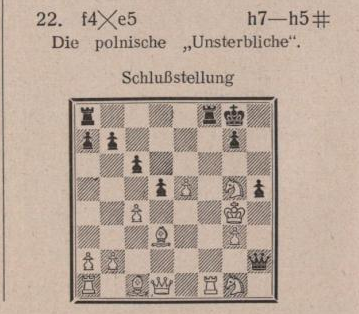Jewish Chess History
Chess History in Palestine and Israel
Saturday, April 27, 2024
Lasker in Church (?)
Oren and Blass, 1926 Polish Championship
"Both New Masters, Eliskases and Glass"
Source: (Neue) Wiener Schachzeitung, vol. 7 no. 19 (October 1929), p. 289
We have often noted in this blog that Glass, the one-time Palestinian / Israeli master, had never in fact seen himself as anything else than Austrian, returning there after the 1935 Maccabiah and, later, after a few years in Israel in the 1950s. This is undestandable considering his greatest chess triumphs were there, in the 1920s. Here, Herbert Halsagger shows us, is a photo of the players of a tournament on top of a mountain, with "both new masters, Eliskases and Glass" in the middle. They both won the Austrian master title for coming in first and second, respectively, in the Innsbruck Congress of the Austrian Chess Federation. The entire article is here.
The "Polish Immortal"
Source:(Neue) Wiener Schachzeitung, vol. 32 no. 15/16 (Aug. 1935), p. 226
Who was the first to call the game between Glucksberg and Najdorf the "Polish Immortal"? Herbert Halsagger suggests that it was Tartakower, the annotator of the game as part of his article, "Chess in Poland," pp. 225-229 of the same issue. The entire volume can be found here.




